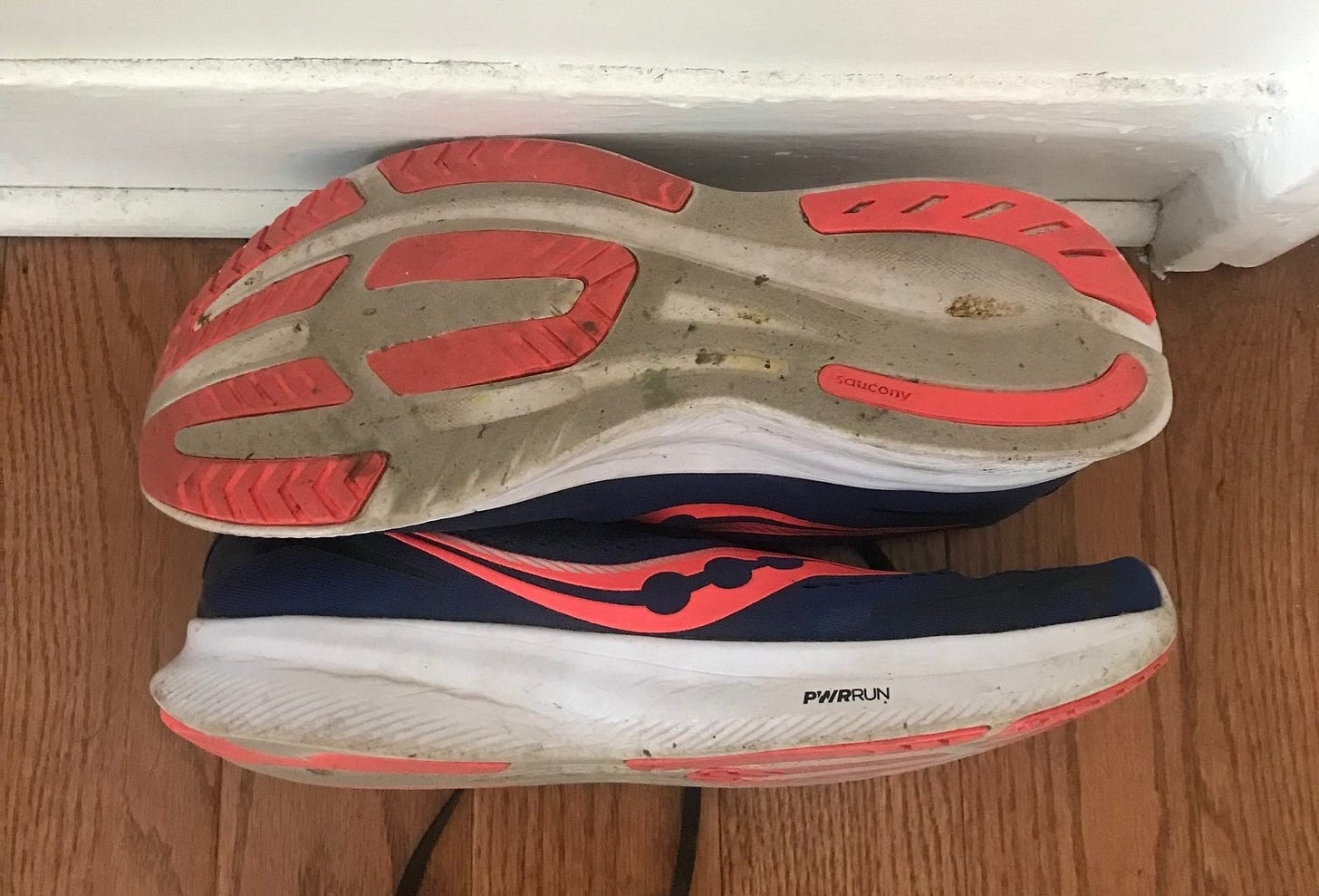I. Jack3d (Original Formula)
Perhaps my most rigid governing principle — one that renders me hopelessly out-of-step — is to not be a tryhard. I mean this less in the Jay-Z, disaffected cool sense (he’s kind of a tryhard) than in the adolescent-male sense, although maybe they’re the same. To be cool was a self-defeating impulse since interrogated and rejected by the younger cohort: for Gen Z, humility is a frivolous luxury occasioned by ephemeral prosperity. You don’t go viral, or get rich, or get into Harvard by having shame. What’s selling out, anyway?
The phenomena I find most disorienting — clickbait content creators, streetwear culture, Drake — are those most contradictory to millennial conditioning. Being cool doesn’t pay the bills, but why have money if you can’t buy taste? Teens choreographing TikTok dances for hours at a time in public…don’t they get bullied for that? I’m a neanderthal, but in my day you’d catch wreck, online and off, for posting a selfie. The first rule of Facebook was you did not talk about Facebook: it was attention-seeking, and you had better things to do than sit in front of a Compaq.
The coolest kid in the room came by it naturally. As a guy you could wear Polo, but not pink Polo; Timberlands, but only the yellow ones. The suppression was traumatic, stultifying, enforcing false modesty. Today’s softer masculinity would be fine were it not premised on consumerism. If jocks are subject to some Great Replacement I’m for it, but from where I’m standing it’s given birth to vapid hypebeasts, guys who spend weekends queued in front of Supreme stores while glued to their phones. They kowtow to multinational conglomerates instead of neighborhood bullies, responding to base stimuli and push notifications. If that’s progress then get off my lawn.
Even this, I concede, is a posture: I’ve gone and pursued writing, the most self-validating, attention-seeking discipline of all. I think some ideas are better unexpressed, that those with the compulsion and bandwidth to post would benefit from doing it less. It’s clear to me the inbox-intimacy of this platform lends to a certain laid-bare bodyposting, and I’ve been transfixed by the genre work I’ve encountered: Jordan Castro and Daniel Cult’s gym theories; Mikala Jamison’s reflections on bodies-in-public; Phil Christman’s bodybuilding diaries; Ashley Reese and John Jannuzzi on semaglutides; Sami Reiss on weight manipulation; T.M. Brown and Foster Kamer on steroids. We’re talking bodies and gender, baby.
II. Hypertrophy
When I moved home last fall I started having nightmares about tackling drills, guys I hadn’t thought of in years who haven’t thought of me in at least as long. Ours might’ve been an interchangeably leafy suburb, except it was all new money, Irish and Italians who’d drifted, in moments and decades of white flight, from New York and Boston. In lieu of any other identity, the community coalesced around our renowned football program. Even the more cosmopolitan among our neighbors — university staff, pharma reps, insurance execs — paid deference to the blue-collar families whose broods had populated our varsity roster for generations. These families were actually quite well-off, titans of sanitation and HVAC, but propounded a salt-of-the-earth aesthetic to combat the new arrivals. They were there before the McMansions went up, and would be there when their foundations cracked and crumbled.
When I was twelve I looked around and said, Welp, looks like there’s a horde of steroid-fueled monsters terrorizing the civilian population, with unconditional support of the tax base, and decided I could use the protection. Much as I would’ve liked to do my homework and escape notice, that was wishful thinking: basically, I joined a gang. It was a gang, only with boosters and cheerleaders, endorsed by our teachers, school board, police department — everyone who, under normal circumstances, could’ve claimed authority. When there were thefts and assaults, when public funds were backchanneled into LLCs owned by coaches and donors, when fourteen-year-olds were roided out of their pubescent minds…well, who was going to do anything about it?
One day early in my freshman year, watching my teammates — guys I’d known since kindergarten — swagger around the parking lot after practice, my mother exhorted me not to be one of those football players. Granted, I wasn’t a good enough pass-rusher to be a dick about it. Years later I’d declare football had bestowed me stoic discipline (most of life, I joked, is getting yelled at by men in windpants), but that was an abstraction: I played football so girls would talk to me, and so guys wouldn’t beat me up. Even accounting for the time, effort, and violence, I liked my odds as a marginal football player better than any alternative.
If my heart wasn’t in it — four-hour practices, film sessions, hazing rituals, running full-speed into 220-pound manchildren — I was resigned to the cachet. Ultimately, I escaped one form of violence for another. I wasn’t a target in the lunchroom or gym class, but I was a volunteer tackling dummy in the center of a notorious steroid ring. We had officially sanctioned lifts a few days a week, obligatory hang-cleans, deadlifts, and grabassery. There was an unspoken understanding that in order to see action on Friday nights, you needed to put in extracurricular hours at Club Fitness on Route One, and possibly engage with the guidos and whatever pharmaceutical product they were hawking in the locker room.
Linebackers showed up for camp with delts and backne like you wouldn’t believe, unremarked upon save for appreciative pats on engorged shoulders: some shot up in plain sight. Coach’s advice after my sophomore season was to put on weight, to see what holes I cold plug in the offensive line. But if I got heavy then I couldn’t play basketball — let alone the pass-cut-fill whiteboy variant we fine-tuned between Thanksgiving and Easter — and any status I gained as a lineman would be lost on my co-eds. Still I lifted obsessively, clawing my way onto the varsity special-teams units.
My most charitable teammates received me happily: I punched and tackled my weight, and a student-athlete in their midst bestowed vague legitimacy. My brusquer teammates telegraphed disdain toward coattail-riders in unimaginative ways. The permissiveness, the agreement to look away, was patronizing. Even if our afterschool hours weren’t spoken for, my teammates would not have been hitting the books. Another unspoken agreement — they didn’t have much to look forward to. Meanwhile they had friends, something to do, titles to win. So what if they got a bit rowdy, if anabolics shriveled their gonads into raisins? Memories would sustain them through adulthoods of hard labor.
One winter a quiet kid named Ed — average student, social non-entity, poorly dressed even for 2006 — showed up to school looking like Lee Haney. He’d gotten ripped overnight, and once the shock had subsided, the varsity athletes were mad. Here we were, burying ourselves beneath rusty Olympic bars, getting jacked for the glory of our coaches, community, and forebears; any personal benefits were ancillary. A direct-to-consumer bodybuilder was infringement, a vanity case. (If you were going to get yolked, the least you could do was strap on pads and block a path for a ballcarrier.) In Ed’s case, the gambit backfired. Such a transformation could only have been driven by inarticulate rage: guys were annoyed and girls were spooked.
We went 11-0 my senior year, trouncing public schools and Catholic powerhouses. But in the state championship a Fairfield County team cornered us into submission, dizzying and exhausting us with a no-huddle West Coast offense. Their quarterback, a reedy WASP named Charlie (we didn’t have Charlies, just Mikes and Steves) was recruited to play at a liberal-arts college. The following spring he auditioned for a small role in a campus production; today, he’s a Broadway star. Turns out we should’ve been running more and lifting less.
III. Atrophy
If my peak as a weightlifter was occasioned by obsessive compulsions, they were at least informed by material pressures. During my junior year I started drinking beer with some regularity, and decided I had to run one mile for each Busch consumed, ideally within the same digestive cycle. When I arrived at college I was concerned about the proverbial freshman fifteen, so I upped my road mileage to forty a week, doing an hour of upper-body every other day and playing five-on-five three evenings a week. One semester I did a full-time internship away from campus, one of those university-sanctioned rackets where you pay tuition to do secretarial work in exchange for interdisciplinary credit. I was so worried about atrophy I joined an LA Fitness in one of those creepy commuter cities ringing Washington, D.C., and walked two miles each way to use the free weights.
As the months passed I found myself in maintenance mode, faced with the conundrum that’s plagued athletes and “athletes” for centuries: What to do with a body that’s outlasted its purpose? It had not conferred status in my new environs. On campus, 140-pound Sigma Chis from Falls Church strutted like prizefighters, safe in the knowledge no one would call their bluff. The social order — or lack thereof — should’ve been liberating, but it was just lawless, a petri dish for fake tough guys emboldened in lieu of the real thing.
A torn rotator cuff at 22 was the next milestone. The muscle loss was precipitous, but by that point I was spending forty hours a week in a desk chair, my body little more than cosmetic affectation, an expression of identity. What was I communicating, and to whom? Angular, approachable guys had the advantage of neutrality.
I was clinging to low-wage work in a precarious job market, and didn’t need another strike against me if I could help it. To be conventional is to be, among other things, employable in a country where housing and healthcare depend on it. American children are taught the mandates of capital, the habits compatible with commerce; catalog the body types you encounter next time you’re in New York City.1 Whether it’s jogging, going under for a nose job, shooting Ozempic, or flying to Turkey for cut-rate hair plugs — none of these are expressions of dysmorphia, of body positivity or negativity. These are ways Americans seek material stability.
Something had to offset my diet and metabolism, so again I increased my road mileage. I’ve never known whether I actually like running or not. If there were a more efficient way to burn calories, to keep my heart rate and blood pressure down, I’d probably do it. I run the same route five days a week. I’ve competed at every distance from the 5K to the marathon, which isn’t an accomplishment: this is how my body looks and functions until illness, injury, and aging diminish it further. I suppose I have a moderate-to-severe form of exercise anorexia, but as the wise man said you can be addicted to anything, and I don’t see any drawbacks until the day I can no longer indulge it. At which point, hopefully, I’ll say I had a good run.
Do I miss having shoulders and traps and veins? Only in the way I miss being 22: sometimes, a lot, or not at all. Adults tend to wear clothes around one another. A gym physique in your thirties is a luxury item, one that makes you prone to injury and getting jostled on the subway. You can bench 225 as a regular guy who goes to the gym three days a week. If you want to bench 315, you need to orient your entire schedule, diet, and politics around that goal, and only your fellow creatine-stackers will know the difference.
What you’ll find in the literature is defensiveness, an insistence that gym culture is neither vain nor toxic, that lifting heavy bestows depth and humility as well as mass. Here’s Phil Christman in The Point:
I have never quite figured out what “mindfulness” is, but I know that I am the sort of person who is held to benefit from practicing it. Unfortunately, precisely because I am this kind of person, meditation makes me angry. A compound lift, it turns out, involves the exact amount of being-here-now that my mind is capable of. Ask me to sit still and concentrate on my breathing, and I will panic. Ask me to lift a heavy weight off the ground without throwing out my back—to keep the legs involved, activate the posterior chain, avoid hyperextension (and do all this fast, before I have a chance to register just how heavy the bar is)—and it makes me remain in my body without getting bored. I know from experience that I simply cannot think about, say, climate change while doing a heavy dead lift. The activity itself forces good form on both mind and body. It’s a sort of violent yoga.
I find this waxing sort of willfully dishonest — in the opening paragraph, Christman concedes his obsession owes to a fucked-up body image, his days as a chubby kid. He’s ducking the vanity charges. Most folks, after all, work out for acquisitive purposes: to look good, to attract mates, to achieve something. Not Phil Christman, English Lecturer II at the University of Michigan. No, he is a stoic, an ascetic, fighting gravity, building discipline, pushing limits. A monk in the squat rack.
Are these Zen philosophies, or right-wing bullshit? Would you put this on your Hinge profile? Weightlifting makes Christman an anomaly in his circles; what he’s failed to consider is that the American male is more likely to have a gym membership than a library card. The strongest guys at Christman’s gym, he maintains, are the nicest — and they’re definitely not bigots. (How the heck would you know? Are you discussing Proposition 8 between sets?) Jordan Castro’s Harper’s essay opens with a similarly labored transfiguration metaphor, before diving headfirst into discourse:
The mainstream media has responded to the rising popularity of lifting with ham-fisted ideological earnestness: lifting weights—surprise, surprise—is actually a form of fascism! The Guardian has published articles about the “wellness-to-fascism pipeline,” “fascist fitness,” and one titled Do You Boast About Your Fitness? Watch Out—You’ll Unavoidably Become Rightwing; Time wrote about “The White Supremacist Origins of Exercise” in the U.S.; MSNBC tweeted an article about “the far right’s obsession with fitness”; and so on. The idea of strength—seen cynically by many as the cousin of toxic masculinity—is considered suspect by many in the credentialed corners of our culture. Muscles, historically associated with the working class, are still seen by many as representative of low-status worldviews. Right-wing people value strength—whereas we value everything equally!
Well, you said it! Castro’s essay is a paean to YouTube influencers and bodybuilding forums — where Christman rejects the manifestly toxic elements of gym culture, Castro embraces them with a smirk. He is a novelist, a veteran of fussy literary spaces. He may not win as many awards as Ocean Vuong, but he can probably do more pull-ups.
These essays are written in keening voices, a chorus of overcompensation. It is the zeal of the newly converted, people who’ve discovered vegetables or Catholicism or Springsteen at age 32. (Do they not have these things where you come from?) There’s a reason most athletes peak in high school. To be middle-aged and to dream of becoming bigger, stronger, and more imposing is too ridiculous to be explained. These writers provide religious explanations for their most acquisitive impulses.
And if you actually succeed, you are locked out of different spaces. People find you scary, the tenure committee thinks you’re a dumb jock. You were scrawny, and felt disenfranchised; now you watch bodybuilding videos, and you are disenfranchised. You’ve decided you don’t need a COVID vaccine because you’ve done your own research. The pit of grievance is bottomless. How else to explain this guy, a white-collar professional who cycles steroids, suffers debilitating depression, watches his testes shrivel, and recommends the experience anyway?
Not to be a jock about it, but you guys didn’t lift back when it would’ve done you a few favors. Now that you have a desk job, you’re gonna start dialing HGH? You’ve ascended to a place where intersectionality is more or less embraced, and this is the gender identity you choose to perform? The toughest guy in the humanities department is still a humanities professor.
There was a time, not long ago, when men couldn’t discuss their bodies much less their feelings. Bullheaded stoicism has been replaced by looksmaxxing and mastic gum and Joe Rogan, batteries of supplements and cosmetic surgery, testaments to individual prosperity. The gym steers you toward right-wing ideologies, and vice versa. False humility, I maintain, was better than none.
previously: is our children learning? | Deleted scenes | Goodbye to some of that | Getting around
Was hoping to get through this without wading into Ozempic discourse — but of course people are mad! Rich folks already had access to trainers and chefs and nutritionists. Now there’s an expensive drug, prescribed under the counter for cosmetic lifestyle purposes, that makes you hot. What is this if not a widening of the opportunity gap?






i feel i can squat more than a lot of these guys but you dont see ME writing in the point abt it, no sir
a full-length Football Pete memoir would go so hard